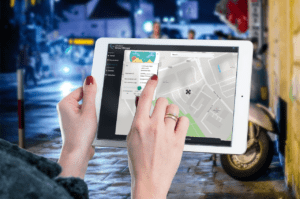 Switzerland is launching the first nationwide implementation of Remote ID services. With a final rule on Remote ID for drones due by the end of this month in the U.S., the global aviation community is watching this first important launch of Remote ID technology.
Switzerland is launching the first nationwide implementation of Remote ID services. With a final rule on Remote ID for drones due by the end of this month in the U.S., the global aviation community is watching this first important launch of Remote ID technology.
The Swiss Federal Office of Civil Aviation (FOCA) and the Swiss U-Space Implementation project (SUSI) have launched the very first nationwide system of Remote ID, one of the cornerstones of a robut Unmanned Traffic Management (UTM) system. During the Swiss soft launch, compliance with Remote ID rules are voluntary for operators, and access to drone identity information will begin with public safety organizations.
How Implementation of Remote ID Will Work
ANRA Technologies (ANRA), a global leader in UAS Traffic Management (UTM), is one of the technology partners chosen to be part of the initial rollout. Today, ANRA launched SmartSkies™ DroneID: one of the tools that will demonstrate how Remote ID will work.
Approved by the Swiss government, SmartSkies DroneID™ provides appropriate levels of access to drone information based on user permissions. This year, SmartSkies DroneID™ will enable public safety organizations to identify drones operating in their vicinity by providing the drone registration number and mission information, while additional operator details are available to qualified authorities upon request. Eventually, this capability will be available to the general public.
This permissions-based approach deals with one of the primary concerns drone operators express about the implementation of Remote ID. Providing operator details only to appropriate authorities after an application process protects operator privacy: while also meeting the needs of authorities to ensure the safety and compliance of drone operations.
Amit Ganjoo, CEO of ANRA Technologies, is no stranger to UTM projects. Ganjoo and ANRA’s technology have been critical partners in projects all over the world: Ganjoo is also a board member of the Global UTM Association (GUTMA.) ANRA is working to provide multiple pieces of the technology that will be used in the SISU launch.
In addition to NET-RID, ANRA is also providing a Discovery and Synchronization Service (DSS), which enables UAS Service Suppliers (USS) to discover with whom they need to share data and ensures USSs have a current and consistent view of shared data for safety-critical information while protecting operator privacy. ANRA is hosting one of the only two DSS instances enabling this nationwide Remote ID service.
“This first nationwide implementation is a big step forward for Remote ID,” says Ganjoo. “We’re thrilled to be part of the project and have the opportunity to see the pieces come together. “
Miriam McNabb is the Editor-in-Chief of DRONELIFE and CEO of JobForDrones, a professional drone services marketplace, and a fascinated observer of the emerging drone industry and the regulatory environment for drones. Miriam has penned over 3,000 articles focused on the commercial drone space and is an international speaker and recognized figure in the industry. Miriam has a degree from the University of Chicago and over 20 years of experience in high tech sales and marketing for new technologies.
For drone industry consulting or writing, Email Miriam.
TWITTER:@spaldingbarker
Subscribe to DroneLife here.







[…] The regulation requires drone operator/owner registration with the National Aviation Authority (NAA) of one’s EU country of residence unless the drone weighs less than 250g and is either a toy or has no camera or other sensor that can detect personal data. Additionally, drones with airworthiness certificates need to be registered if conducting specific or certified operations. The regulation also requires RP training for these higher risk operations, insurance and appropriate NAA flight authorization for the relevant geographical zone. All of this is additional to CE (“Conformité Européenne”) marking requirements for small drones up to 25kg (a number between 0 and 4, that specifies the class of the drone as C0, C1, C2, C3 and C4) and a RID requirement (see Regulation (EU) 2019/947; see also previous DroneLife coverage of Swiss implementation of RID). […]